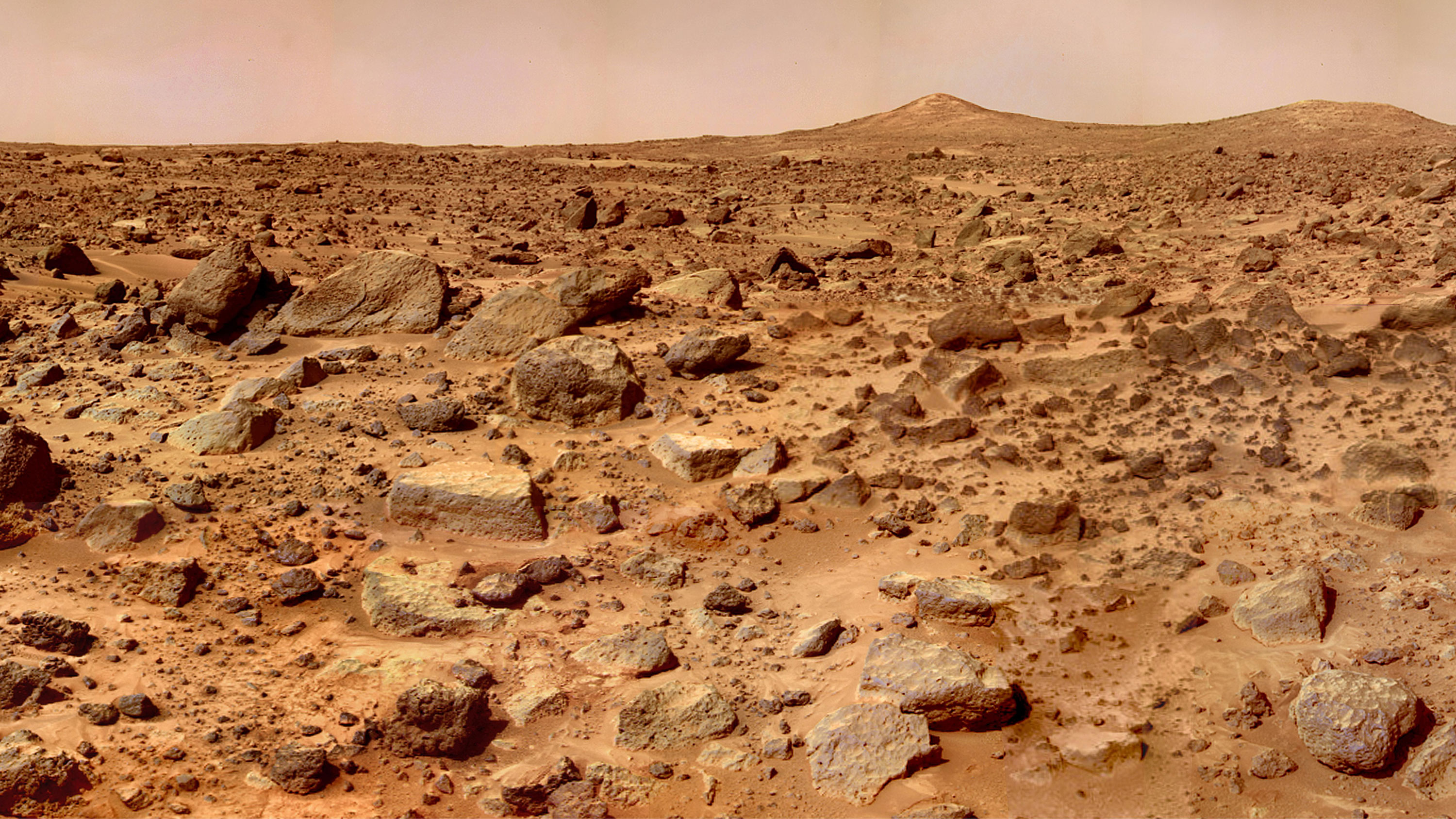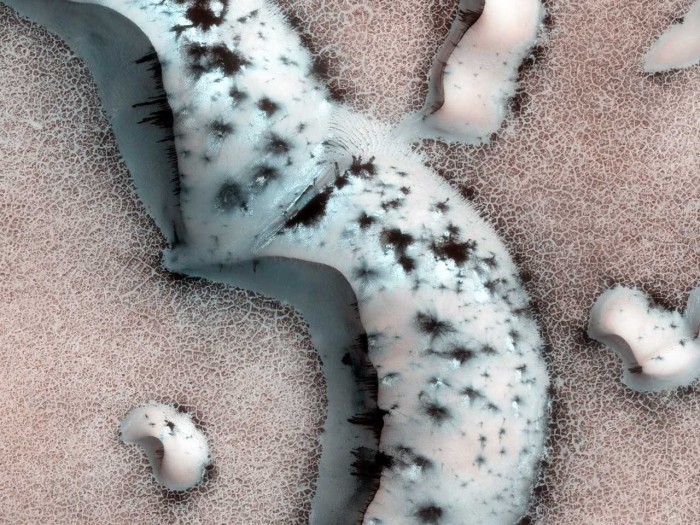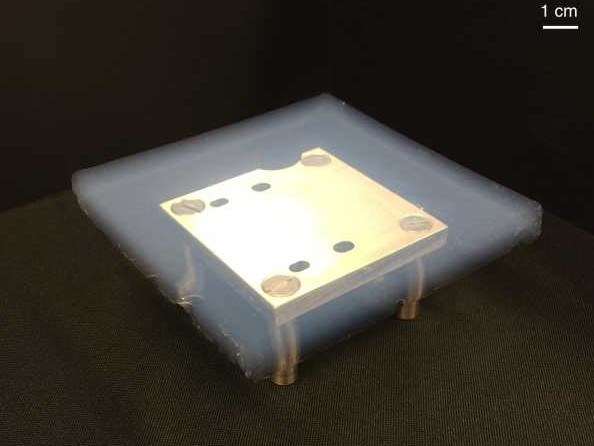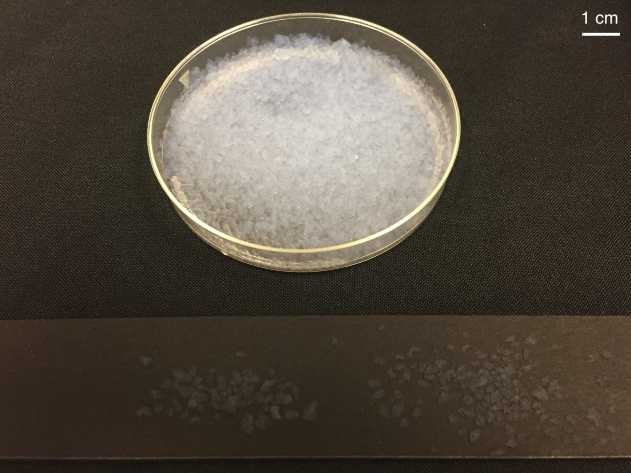We might grow plants on Mars by warming the ice caps with “frozen smoke”

The idea of Mars as a kind of “Plan B” for humankind has firmly lodged itself into our cultural consciousness. As imagined in Kim Stanley Robinson’s epic Mars trilogy chronicling humanity’s settlement and terraforming of the planet, we’d need to make Mars’s surface a lot warmer to stand any chance of moving in permanently.
It would be a huge challenge. Mars’s atmosphere is mostly carbon dioxide, but it’s too thin and cold to support liquid water, a crucial ingredient for life. It’s also exposed to dangerous levels of ultraviolet radiation.
NASA has concluded that warming up the whole planet is unrealistic, as the technologies needed to do so (like the space mirrors imagined in Robinson’s Green Mars novel) don’t exist yet, and Mars doesn’t have enough carbon dioxide trapped in its surface to thicken its atmosphere sufficiently anyway.
However, a new study in Nature Astronomy suggests that applying silica aerogel—a synthetic, porous, ultralight solid material derived from a gel—to certain areas of Mars’s ice-rich poles could replicate this effect on a much smaller scale. A layer of the material two to three centimeters thick could simultaneously block UV radiation, raise temperatures below so that the ice melts, and allow enough visible light through for photosynthesis to occur.

“Instead of trying to change Mars’s whole atmosphere, we’re suggesting replicating an Earth-like environment in a few centimeters, which would be far more achievable,” says Robin Wordsworth, a planetary scientist at the Harvard School of Engineering and Applied Sciences and coauthor of the paper. Rather than terraforming the whole planet, their proposal would effectively do so regionally, although it would take several years to work.
Why silica aerogel? It’s an extremely good thermal insulator, it’s very light (it is 99.8% air), and it can also transmit plenty of light if it’s thin enough. “There’s no other material like it out there,” says Wordsworth. The material—nicknamed “frozen smoke” because of its ethereal appearance—is already on Mars now, being used to insulate NASA’s Curiosity rover.
The research team did a series of experiments to test their theory, creating a layer of silica aerogel particles and another of silica aerogel tiles. These were then exposed to light from a lamp (to simulate the sun’s rays), with the temperature change recorded by tiny sensors. The team tweaked the thickness of the aerogel layer until at 2.5 cm (around one inch) it was able to warm the ground beneath by around 50 °C (120 °F). This would be enough insulation to melt the polar ice and allow liquid water to exist throughout the Martian year.


Silica aerogel in particle and tile form.
Eventually, if it works, this system could be used to create the soil conditions needed to grow plants. “If that’s their plan, it could be hugely useful to future missions,” says Zach Dickeson, a Mars researcher at the UK Natural History Museum’s Department of Earth Sciences.
In the long term, the plan would be to manufacture silica aerogel on Mars rather than transporting it. That’s not as outlandish as it seems, as both silica and water ice exist in certain regions of the planet, according to Germán Martinez, a staff scientist at the Lunar and Planetary Institute in Houston, who was not involved in the study.
However, this regional terraforming plan is still deep in the realms of theory. Although we can test it on Mars-like areas of Earth like the Atacama Desert in Chile, there’s no substitute for the real thing. For that, we would have to be patient. NASA plans the first human mission to Mars in 2030.
Deep Dive
Space
How to safely watch and photograph the total solar eclipse
The solar eclipse this Monday, April 8, will be visible to millions. Here’s how to make the most of your experience.
How scientists are using quantum squeezing to push the limits of their sensors
Fuzziness may rule the quantum realm, but it can be manipulated to our advantage.
The race to fix space-weather forecasting before next big solar storm hits
Solar activity can knock satellites off track, raising the risk of collisions. Scientists are hoping improved atmospheric models will help.
Stay connected
Get the latest updates from
MIT Technology Review
Discover special offers, top stories, upcoming events, and more.